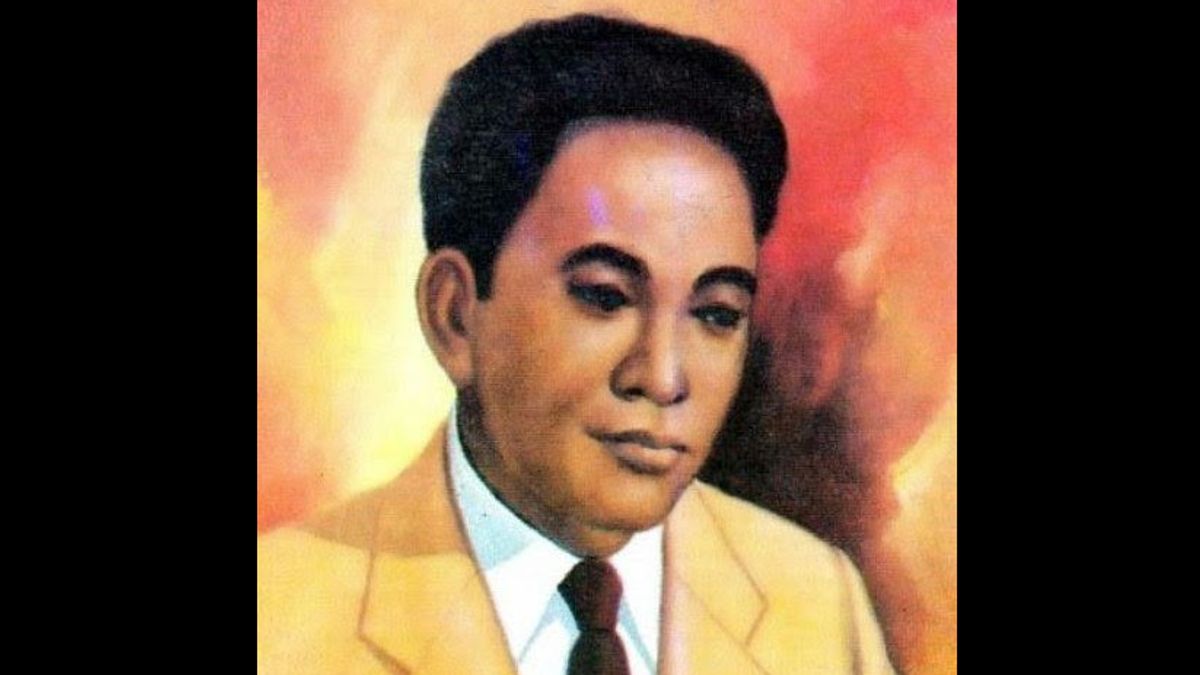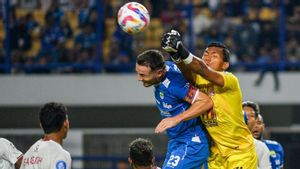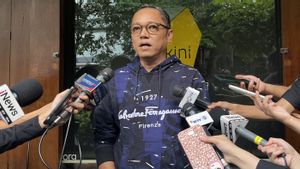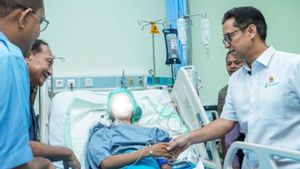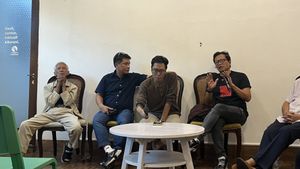JAKARTA - Prof. Dr. Wilhelmus Zakarias Johannes was a freedom fighter. The first Indonesian radiologist is also listed as a professor at the Faculty of Medicine and rector of the University of Indonesia (UI). Thanks to him, UI has become one of the world's most respected universities.
The contribution of this hero from Rote is not only active in fighting for the fate of the Bumiputras at the eastern end of the archipelago. Doctor Johannes even became the savior of the Bumiputras who were injured in the war of independence.
Doctor Johannes was born in 1895 in Rote, East Nusa Tenggara (NTT). He is the eldest son of the family of MZ Johannes and Ester Johannes-Amalo. His father, MZ Johannes, was an assistant teacher at an elementary school in Rote who also served as a church administrator.
Armed with the profession of his parents, little Johannes had the privilege of being able to attend a Malay School (elementary school level). It is said to be a privilege because education was an expensive item for all native Indonesians during the Dutch colonial era.
However, little Johannes, who understood school to be an expensive item, did not waste this golden opportunity. As a result, Johannes grew into an intelligent human being. He also graduated from elementary school earlier than he should.
Principal Johannes immediately recognized intelligence. Because of this, the principal of the elementary school immediately wrote to the Governor General of the Dutch East Indies asking Johannes to be allowed to continue his education at the Europeesch Lagere School (ELS), Kupang. The request was granted.
Launching the official website of RSCM Radiology, Johannes can easily complete his studies at ELS. As a result, Johannes was flown to Batavia to study at the Bumiputra medical college at the School tot Opleiding van Indische Artsen (STOVIA).

Again, because of Johannes' genius, he graduated one year early. The period of education that should have been taken for nine years, was actually completed by Johannes in just eight years.
So, Johannes also holds the title of doctor in plenary before his name. This historic event occurred at the age of 25 in 1920. Like other STOVIA graduates, Johannes was also active in the people's movement to achieve an independent Indonesia.
It is possible that the majority of STOVIA graduates are from Java. However, there are also many STOVIA graduates who come from other parts of the archipelago and speak loudly on average. As for those who come from Minangkabau, Sumatra, Sulawesi, to NTT.
“School of Doctors Java (STOVIA) in 1896 was located in front of Militair Hospitaal, in front of Gang Mendjangan, Pasar Senen, Weltevreden, consisting of two parts, namely preparation and medicine. The graduates are solely from Bumiputra origins, for example Javanese, Sumatran, Manado, Timorese, Ambonese, and one or two Makassar or Malay people from Borneo," said STOVIA graduate Doctor Jacob Samalo as quoted by Rosihan Anwar in the book "Petite Histoire" Indonesia Volume 3 (2009).
“Except for some disagreements between the Minangkabau and the Bataks which resulted in a fistfight, we lived together as sons of a large family. Speaking in general, at that time there was unity among STOVIANEN," he added.
Nationalist doctorAfter graduating from STOVIA, Doctor Johannes chose to teach at the Dutch East Indies Medical School, Nederlandsch Indische Aartsen School (Nias) in Surabaya. Shortly after, Johannes was appointed a doctor in Bengkulu.
Ten years later, Johannes consecutively served as a doctor at Muara Aman, Mana, Kayu Agung, and Palembang Hospitals. However, while on duty in Palembang, Doctor Johannes had an accident.
He was attacked by a sickness. Therefore, Doctor Johannes immediately went to Jakarta to receive special treatment at the Centraal Burgerlijke Ziekeninrichting alias CBZ (now: Dr. Cipto Mangunkusumo General Hospital).
Doctor Johannes was treated at CBZ for one year. At the same time, Doctor Johannes continued to study radiology. Although at that time the treatment with X-ray analysis was not as sophisticated as it is now, Doctor Johannes still believes that paralysis in the future can be cured with a mature X-ray analysis.
Doctor Johannes' perseverance was rewarded. He recovered from paralysis even though he had to sacrifice his right leg but he was still limping. The healing blessing was used as a momentum to study harder by Doctor Johannes.

He also succeeded in developing his knowledge as a radiologist. He was also appointed as an Assistant Expert in the field of X-rays and radiology at CBZ Jakarta and in June 1935 developed the science of x-rays at the Semarang Central General Hospital (now: Dr. Karyadi Hospital).
Upon his return to Batavia, Doctor Johannes was appointed as Head of the CBZ X-Ray Section. Then, he became the first person to get a brevet (diploma) roentgenoloog (radiology expert) in 1938. A year later, his work as a member of the Volkstrad people's council began.
During his time as a member of the Volkstrad, Doctor Johannes played many roles as a representative of the Residency of Timor. Doctor Johannes has done a lot of fighting for the fate of the bumiputras in the eastern tip of Indonesia.
When the Japanese came, Doctor Johannes together with Doctor Sam Ratulangi and Doctor Sitanala formed the Preparatory Body for Christian Unity (BPPK). The agency later developed into the Christian National Party, and later became the Indonesian Christian Party (Partindo).
Then when the Dutch military aggression raged, his instincts as nationalists emerged. He was involved in the war of independence by devoting himself as a doctor who treated freedom fighters who were victims of the war.
“When the war of independence raged. Yohannes served at the Central General Hospital in Jakarta. The RSUP at that time was the right place for young Indonesian fighters who were injured. That's what caused the Dutch suspicion. The Dutch army ransacked his private house many times because it was considered a gathering place and hiding place for the Indonesian independence fighters. The Dutch government once invited him to cooperate with the promise of giving him a high salary and position. However, the offer was flatly rejected,” wrote JB Sudarmanto in the book Jejak-Jejak Pahlawan: Adhesive Unity of the Indonesian Nation (2007).
Serving at the University of IndonesiaAfter Indonesia officially became a sovereign state in 1948, Doctor Johannes served as a professor and Dean of the Faculty of Medicine from 1950 to 1952. Doctor Johannes made the choice because he saw that UI was not getting adequate attention from the government.
After that, the presence of Doctor Johannes allegedly turned UI back into a prestigious university. Because of that, Doctor Johannes had a chance to taste the rector's chair in March 1952. Like a savior, Doctor Johannes restored the spirit of the UI academy.
“The nature and function of higher education in the state and society does not allow an organizational form that places the University as a mere service under the administration of the Ministry of Education, Teaching and Culture. Such an arrangement which will automatically hand over the university to the bureaucratic formalism of a ministry, will destroy the academic spirit and hinder the development of university life," concluded Doctor Soepomo as quoted by S. Somandikarta et al in the book Golden Year of the University of Indonesia (2000).
"Therefore I repeat the call of Prof. Johannes (Prof. Dr. WZ Johannes, Dean of the Faculty of Medicine 1950-1952), so that the government gives autonomy in the administrative and material fields to Universitet Indonesia, in addition to the autonomy geestelijke (freedom of the academic pulpit) which should be owned by universities "continued Doctor Soepomo.
Not long ago serving as Chancellor, Doctor Johannes who was assigned to study the development of X-rays and the operation of hospitals in several European countries (Netherlands, Switzerland, Germany, France, and England) died in the Netherlands on September 4, 1952.
Doctor Johannes had a sudden heart attack. In mourning, the Indonesian government sent his body from the Netherlands and arrived at Tanjung Priok Port, Jakarta, November 24, 1952. He was then buried on November 26, 1952 at the Jati Petamburan Cemetery. His leadership at UI may be brief, but it leaves an imprint.
*Read other information about EDUCATION or read other interesting articles from Detha Arya Tifada.
Other MEMORIESThe English, Chinese, Japanese, Arabic, and French versions are automatically generated by the AI. So there may still be inaccuracies in translating, please always see Indonesian as our main language. (system supported by DigitalSiber.id)
